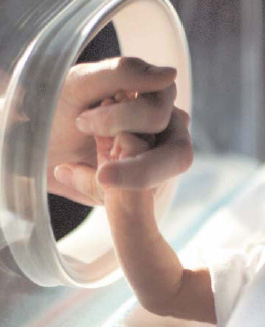During my zookeeping and environmental education career, I have interacted and worked with a variety of animals, including brown bears, wolverines, red foxes, moose, camels, mountain goats, dolphins, sea lions, raccoons, porcupines, snakes, raptors and ravens. I am also a young adult author, and my debut novel ESSENCE was released in June 2014 by Strange Chemistry Books. Ask me anything!
Wow, this is a hard one! I will preface this by saying I have never used this medication (whether on an animal or on myself), so I am definitely not an expert on this. And I'm not familiar with this medication ever being used on an animal for any reason--except during its testing stage in labs. (I could definitely be wrong, though. Someone please correct me if you know better!) However, I am a little familiar with the medication, so I will give this my best shot. Benoquin (generic name Monobenzone) is a monobenzyl ether of hydroquinone that is used by humans to depigment their skin. It works by increasing the excretion of melanin--which is the pigment that gives our skin color. Without melanin, our skin becomes much lighter. Benoquin isn't recommended cosmetically for things like lightening freckles (because the results can be uneven), but it can be very effective with certain skin conditions like vitiligo--which is uneven colorless patches on otherwise normal skin. (Think Michael Jackson. Although there is some speculation as to whether or not he actually had vitiligo, he definitely used Benoquin--and other drugs--to lighten his skin. The result is the dramatic transformation of his skin tone through the years.) Hope this helps!
The answer lies in the domestication process that transformed gray wolves into dogs. This process began between 15,000 and 30,000 years ago, when early man began interacting with and taming wild wolves. Not all wolves were suited for this, so only the most "sociable" and "approachable" animals were tamed. These wolves bred with other "man-friendly" wolves, and their offspring grew up even more comfortable around man. As each generation passed, the fear of man gradually left these wolves. And as each generation passed, the wolves' anatomy and physiology began changing. Humans who wanted strong animals to pull their sleds selectively bred their strongest animals together. Humans who wanted fast animals to help them hunt selectively bred their fastest animals together. Eventually, the wolves had changed so much that they weren't even really wolves anymore. That's when they first became dogs. (And that's why there's so much variation between breeds today!) To answer your question, I would argue that wolves aren't actually "vicious" creatures; they are just wild animals that are guided by instinct and strength and prowess. Their natural fear of man is what makes them appear vicious to us. Dogs, on the other hand, have been bred and raised among humans for so long that they view our relationship with them as natural. Their instinct to fear us has been absent for many thousands of years, so they are born with a clean slate against us. It is up to us to ensure we live up to their trust.
Hi Julia! Great question... This DEFINITELY depends on the species of the animal. For obvious reasons, zoos place more emphasis on rare and endangered species, but offspring are sometimes welcome for other species as well. Child-rearing is great behavioral enrichment for many social animals, and it strengthens group bonds as well. The question zoos always have to ask is, "Would a newborn take away resources that could be used for an orphaned or injured animal instead?" I worked at a zoo in Alaska that rescued many animals--including black bears, brown bears, moose and red foxes. We NEVER bred these animals internally, because every newborn would have taken up space that could have been used by a wild animal-in-need instead. (We did, however, have breeding plans for some of our other animals, including our Bactrian camels. Since these animals are already domestic, there's no fear of one turning up orphaned or injured nearby.) Hope this is helpful!
Hi Griz! Believe it or not, I actually haven't seen any grisly attacks--just occasional bites or scrapes or bruises. There are a lot less attacks than you might think, and this is partially due to the safety protocols zoos and aquariums put into place before an animal and its keeper even meet. Animals are basically separated into "fight" animals or "flight" animals. The "fight animals" (bears, most big cats, etc.) are hard-wired to stand their ground when threatened, while the "flight animals" (most hoofstock, wolves, raptors, etc.) have evolved to flee. In most zoos, keepers use "protected contact" while dealing with fight animals--and even some flight animals. This means all training must be done through some kind of barrier--like a fence or bars. This prevents most dangerous incidents from occurring. Injuries can occur even when working with flight animals, of course, so keepers must always be alert, and we must learn to "read" our animals before training can occur. If an animal seems "off" for some reason, we must trust our gut and put our personal safety first--even if it means temporarily missing a training session. (In the event we do get injured, 95% of the time it's because of an error on OUR part--not paying attention, not reading our animals correctly, being distracted, etc.) Here are my personal claims to fame: I have been bitten by a raccoon (twice!), bitten by a bottlenose dolphin, footed by a great horned owl, cornered by a Bactrian camel and stabbed in the arm by a mountain goat. (Every time, the injury was my fault!)
Toll Collector
 Do you think there will be a time where all tolls are automated?
Do you think there will be a time where all tolls are automated?
Nurse Practitioner
 Could a nurse practitioner do the job of a primary care physician?
Could a nurse practitioner do the job of a primary care physician?
School Teacher
 Do you think teachers are underpaid? Why?
Do you think teachers are underpaid? Why?
Glad you enjoyed it! Theoretically, any walrus could be trained like that. However--just like some people enjoy the spotlight while others shy away from it--it often depends on the individual animal. First and foremost, keepers train their animals for practical "husbandry" or medical behaviors--like shifting in and out of pens so we can clean, presenting their paws and teeth so we can check for injuries, presenting their shoulders for injections, etc. Once our animals have those behaviors mastered, we begin to shift our focus. If an animal seems to enjoy our training sessions, we often continue with other behaviors to keep the animal's environment dynamic and enriching. If the animal doesn't, we often leave them mostly to their own devices. If an animal REALLY seems to respond to our training sessions, we sometimes make the decision to train that animal for a show or presentation. It certainly takes a special animal to thrive in a public venue like a stadium--just like it takes a special keeper to thrive in that environment as well. As far as your species question, it depends. Animals with higher relative intelligence often respond more quickly than other animals, but that's not always the case. Generally speaking, it is also easier to train aggressive animals than it is to train shy animals, because aggressive animals are already hard-wired to approach us. It is fairly easy for us to redirect their energy once they do, but it is difficult to overcome the barrier of an animal that is hard-wired to run away from us. It takes a lot of initial training just to get them to feel comfortable being near us.
Hi Alex, and thanks for stopping by! There are so many amazing animal care facilities out there that it is really hard to pick. There any many standards of care that must be met in order for a facility to display exotic species. Some of the highest of these standards are set by the Association of Zoos and Aquariums. Facilities that are accredited by this organization are considered the very best of the best. (Look for their logo next time you visit a facility!) My personal favorite zoos and aquariums are Disney's Animal Kingdom, SeaWorld's Discovery Cove, the San Diego Zoo's Wild Animal Park, the Monterey Bay Aquarium and the Georgia Aquarium--although there are many, many others out there that are just as amazing. In my opinion, these facilities have taken extra special pains to provide incredible enrichment and natural habitats for their animals, and they have also done an amazing job with their educational and conservation signage.
Definitely a valid question, and one I'm sure others wonder about as well. I think the answer depends on your personal definition of the phrase "worse off." From a strictly evolutionary perspective, species like pandas, tigers and polar bears wouldn't have survived this long if they didn't serve a purpose in their environment. Many are indicator species and apex predators, so the health of their entire ecosystem is often mirrored by their personal health. (For example, the loss of polar bears in the Arctic wouldn't just affect polar bears. It would affect arctic foxes, seabirds, walruses, seals, fish, krill, plankton, plant life, etc. If you remove one link in the chain, the entire chain is altered.) That being said, is the entire Chinese ecosystem going to fall apart if pandas are removed from it? No. Probably not. In many cases, humans have altered the environment so drastically that many endangered animals are no longer capable of even surviving in it. So, one could argue that the loss of certain species is just a byproduct of our quickly advancing society. Progress is progress, and sacrifices must be made. This is certainly a valid argument, and I understand why some people feel this way. My personal opinion, though, is that some things have an intrinsic value that can't so easily be quantified. I believe humans--as this planet's apex species--have a certain responsibility to look out for other species. We must particularly protect those species whose survival has been directly threatened by our own personal advancement. Perhaps the responsibility is empathetic; perhaps it is philosophical or ideological. Regardless, I often think of Lyndon B. Johnson's quote: "If future generations are to remember us with more gratitude than sorrow, we must achieve more than just miracles of technology. We must also leave them with a glimpse of the world as it was created, not just as it looked when we got through with it."
-OR-
 Login with Facebook
Login with Facebook (max 20 characters - letters, numbers, and underscores only. Note that your username is private, and you have the option to choose an alias when asking questions or hosting a Q&A.)
(A valid e-mail address is required. Your e-mail will not be shared with anyone.)
(min 5 characters)
By checking this box, you acknowledge that you have read and agree to Jobstr.com’s Terms and Privacy Policy.
-OR-
 Register with Facebook
Register with Facebook(Don't worry: you'll be able to choose an alias when asking questions or hosting a Q&A.)